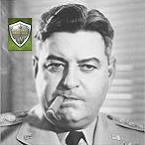Curtis Lemay
Posts: 12969
Joined: 9/17/2004
From: Houston, TX
Status: offline

|
Conclusions
As the scenario designer, when a test ends in a draw it’s a good thing. Furthermore, all the myriad, complicated event sequences worked as designed. But, there is some disquiet due to the fact that I made so many errors on both sides. Clearly, the Soviet defense of Lagoda could have been better. And, without question, the Leningrad Factory 2 should have not been forgotten and left in Leningrad to be destroyed. That would have made the Axis capture of Leningrad more of a contest and somewhat less of a bonanza, though it might have still fallen, eventually. The same is true for the Soviet defense of Kerch. On the other hand, I now feel that the Axis sent too much force into the Crimea, which probably fatally weakened the Ukrainian offensive, resulting in Rostov and nearby targets never falling.
Also, note that several strategic decisions by both sides were not entirely the same as historically done. The Axis didn’t dawdle a month before sending the Panzers to Kiev. The Soviets didn’t launch ill-advised attacks on the Germans left to cover that move, either – making any Operation Typhoon unlikely. I think that if the mistakes and different strategic decisions are factored in, the scenario performed quite close to historical.
Furthermore, the draw result indicates that the scenario is probably in good balance (best play may have given the Soviets a marginal victory, though, if it meant that Leningrad didn’t fall). Players taking a conservative historical approach should find that the game turns on the battle for Lagoda. But the neat thing about Barbarossa scenarios is that the players are not restricted to such conservative approaches. There are riskier options that could reshuffle the possibilities a lot.
One obvious one is for the Soviets to forgo establishing a secondary defense line along the Dnieper and retreating much further before setting up a defense. This preserves more of the initial force and avoids any Kiev pocket. But it will, obviously, lose more production sooner, and may allow the Germans to slam into the most valuable Soviet territory before the defense is ready. And the Dnieper is a good defense line.
The other obvious one is for the Germans to not redirect the panzers to Kiev, but to strike straight for Moscow. This is probably the only real chance the Germans will have to take Moscow, given best play by the Soviets, and success would garner a bunch of VPs and a serious strategic dislocation of the Soviet position. But a failure would likely leave the Soviets much stronger and in possession of most of the Ukraine. But if the Axis player wants a victory instead of a draw, capture of Moscow is vital.
I only had one thing that I thought the test revealed a need for adjustment to. The Mud Phase shock penalties have some unintended consequences. They just about halt rail repair and they slash force supply levels. Some of the decrease in force supply levels might be reasonable (due to the mud), but not all. I may try to adjust the supply levels upward for that period. And rail repair shouldn’t have been affected by the mud, so I will try to add some auto-rail repair for that period. Of course, I first have to find the event slots to do so. If the number of slots is ever increased again, I’ll also auto-disband the rest of the manpower levy units.
Like its companion scenario, Germany 1945, the scenario is fun and not that difficult to play. The test was started on July 12th and ended on August 17th with only a few interruptions. The actual total days gaming was only 31 (for 29 turns, playing both sides). Plus, like with Germany 1945, the absence of ant-unit tactics allowed me to focus on realistic deployments – Leningrad, for instance, was impregnable until rendered unsupplied. Finally, the game scale allowed strategic factors to be concentrated on: How far to fall back? Go for Moscow or Kiev? What targets to concentrate on? Etc.
The test reaffirmed the lesson of the Germany 1945 test about the importance of HQ support for defensive positions. It also affirmed my comments in the briefing about the Soviets being poor attackers. In fact, I really didn’t determine for sure just how good they may or may not be at defending, either, especially if unsupported. An early strike at Moscow by some enterprising Axis player might settle that.
Having played the game, I have a new appreciation for some of the decisions both sides made. It takes a very brave Axis player to forgo the envelopment of Kiev for a risky strike at Moscow. And those powerful looking Soviet armies sure appear to be ready for the offensive while that envelopment is going on. It takes a very disciplined Soviet player to not fall for that (probably false) offensive opportunity. And Leningrad’s defense is a really complicated problem for any Axis player to solve.
Once again, happy operational wargaming!
|
 Printable Version
Printable Version































 New Messages
New Messages No New Messages
No New Messages Hot Topic w/ New Messages
Hot Topic w/ New Messages Hot Topic w/o New Messages
Hot Topic w/o New Messages Locked w/ New Messages
Locked w/ New Messages Locked w/o New Messages
Locked w/o New Messages Post New Thread
Post New Thread